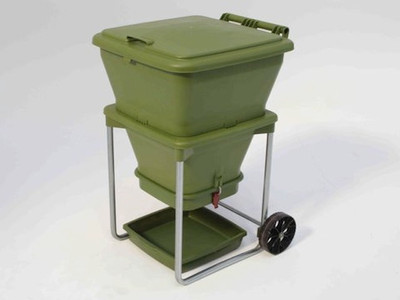Four Seasons in an Urban Community Garden - an interview with Kids' Own
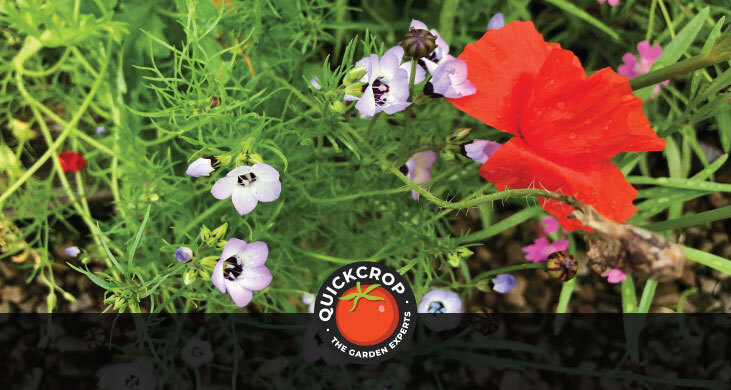
Four Seasons in Our Garden was a year-long intergenerational project that took place in the setting of the Cranmore Community Co Op, a Sligo-based communal space with its own garden, polytunnel and workshop.
This project was a collaboration between the Cranmore Community Co-Op and children’s book publishers Kids’ Own, whose office is also based in Sligo. Each season saw a different artist and a different scientific expert or educator join the space. The weekly sessions revolved around topics like biodiversity, interconnectedness and sustainability in the garden, but very much in a loose, adaptable way that encouraged creativity and exploration.
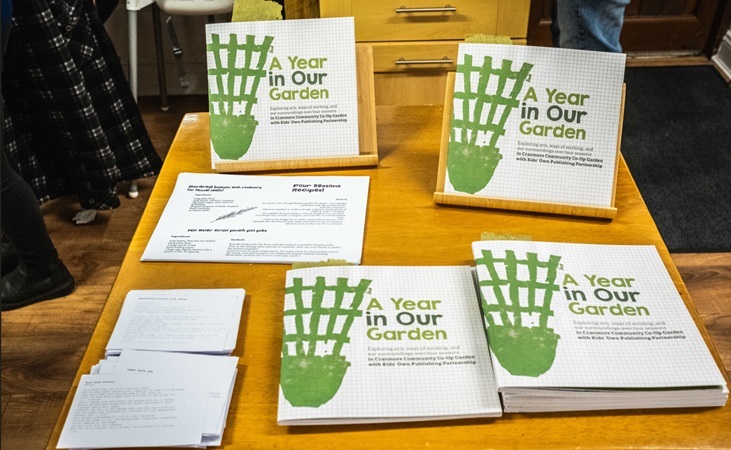
The resulting book A Year in Our Garden was launched in December and is available directly from the Kids’ Own website. It features a wealth of visual material from the project, shared knowledge, as well as unique how-to guides for activities such as marbling with Carrageen seaweed or printmaking using plant material.
As you can imagine, there was much more to this wide-ranging project than the beautifully-designed book that emerged. So to learn a bit more, I spoke to Kids’ Own project manager Lorna Kavanagh and Vanya Lambrecht Ward, who as an artist herself helped to oversee each season.
Lorna and Vanya were happy to chat about their experience with the project, picking up threads of conversation from each other and reflecting the enthusiasm and curiosity - creative and otherwise - that went into such an undertaking.
The Four Seasons in Our Garden project and book was funded by Creative Ireland’s Climate Action Spark Fund.
Photos from the book launch were taken by Cían Flynn.
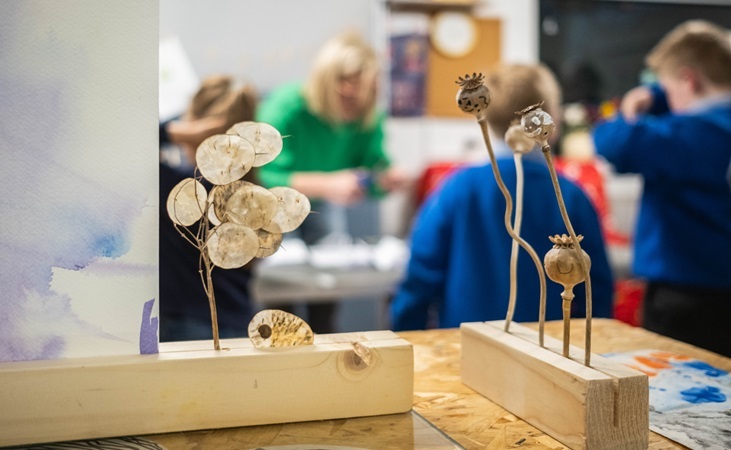
Q:Tell us a little about Kids’ Own.
Lorna: Kids’ Own is a children's arts organization and charity. We advocate for the children's voice and their experience: that it’s not sidelined, and that it’s brought to the table in government, for example.
Part of the work we do is that we make children's books with children, and that they’re not fictional: it's their lived experience. We work a lot with minority groups, some of whom are Traveller children, refugee and migrant children, homeless children, children who experience foster care and different disability groups.
The book isn't the most important outcome; it's more about the process and the experience the young person has taking part in the project. Kids’ Own place a professional artist or a professional writer in a setting with the children, and everybody's working together collaboratively on the outcome. Which isn't always a book - sometimes it's a poster, or an intervention that might happen somewhere, or a video.
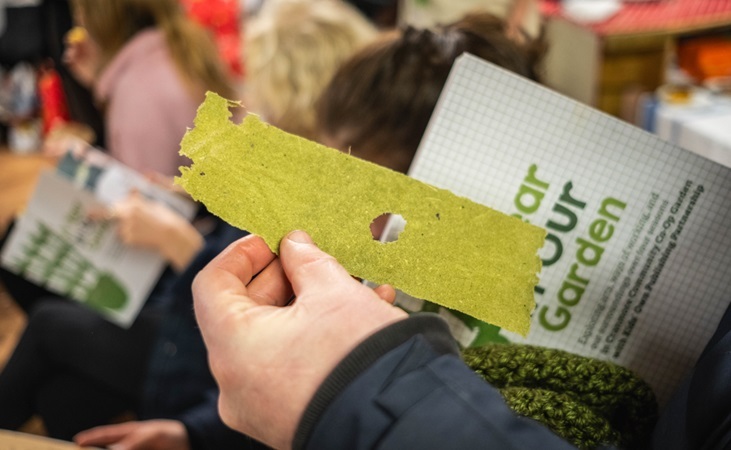
A Year in the Cranmore Community Co Op Garden
Vanya: Each artist had 6-8 weeks engagement with the group, as well as time with a scientist or expert to plan the season and activities, so that they were singing off the same page. We really value that preparation time, because quite often in the arts you only get paid for what you do on the ground - rather than for the consideration or the curating of ideas.
We knew that a year-long engagement was going to be challenging, because we’re aware that there are peak times and non-peak times to catch people, especially with school and other commitments. One aspect of the Cranmore Co-Op space in general is that it’s fluid and people can come and go as they wish.
In those first beginning months, we weren't entirely sure who was going to arrive, but then in the later months it settled down. We had a really good core group of teenage participants; they were our most consistent group in a way.
L: Each season had a different artist. And they approached it differently depending on their practice, and the way that they approach things as an artist. And then every season would also have an expert of some sort that joined the group: it might be a scientist, ecologist or a nature lover, but somebody that’s an expert within that field or passion that they have.
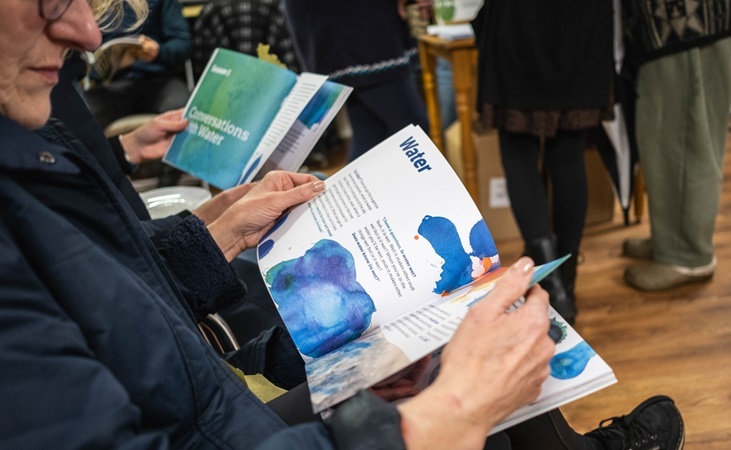
Season 1: Ruth Le Gear - artist
Agnieszka Piwowarczyk - soil scientist
Although the four seasons didn't line up exactly with the calendar seasons, there were of course times of the year where there was less garden activity (in terms of plant growth) as well as darker evenings. As Vanya explains, this was a good time to focus on the less visible parts of the garden ecosystem. A wormery was set up in the first season, with a discussion of soil microbes. The wormery would go on to be a connecting thread between seasons.
V: Ruth Le Gear works with a separate Children's Community Garden herself, so she came with a very strong background.
Her artistic practice deals with water. So the group took water samples and froze them, and then looked at their crystallisation under a microscope. They discussed temperaments of water: including water in our bodies, but also in terms of weather and elements and bodies of water we might come across in nature. They even looked at the types of crystal formations that frozen water samples make after being talked to in a positive or a negative manner.
L: The sessions were also very conversational. It could be something as simple as ‘where is the closest water source to you?’
V: And the older people would have shared knowledge of where the older wells would have been in town.

Worm Works Wormery For Home Composting
View ProductSeason 2: Sarah Ellen Lundy - artist
Róisín NigFhloinn - ecologist
L: Sarah's father is a taxidermist, and that’s now within her own artistic practice. So she was able to bring in a lot of taxidermy animals: an owl, a swan, foxes, ducks, a mouse, lots of little different types of birds, a dehydrated frog….
It's crazy, I’ve never in my life been that close to a fox. I know it's dead, but it still is a fox. And if you're used to an urban setting, then there are some animals you feel like you'll never see up close.
V: We would have had conversations around animals and death, but in a positive way. Of course there was an initial "woah…what’s this?!", with stuffed animals people can sometimes be quite creeped out - but it's a part of the cycle. It actually really helped people think about, ‘well, what is this? You know, how do they survive and how do they live?’
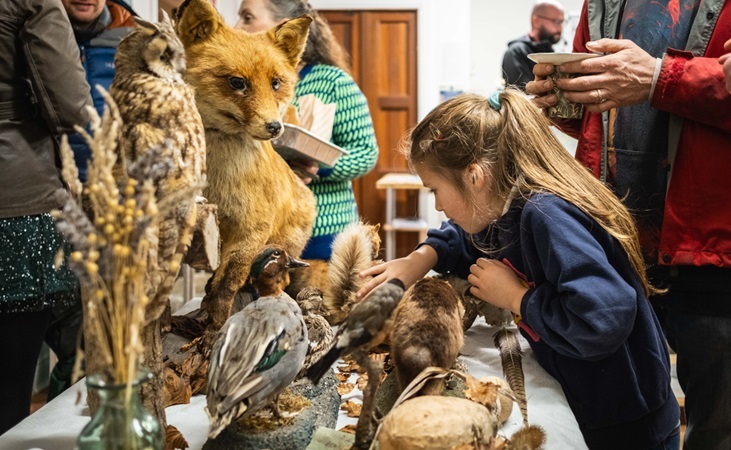
L: After lots of discussions around seed saving and harvesting, we spent time making our own imaginative seed pod: what shape it would be and how would it hold and protect the seeds; and then making that out of clay.
We took a walk in Doorly Park with Róisín NigFhloinn, who gave an amazing talk. She was able to point to trees for example and say, ‘well, that tree is growing there because this tree is growing here’. And pointing out different types of lichen on the trees. Doorly Park is an area where I'd say every participant that came to us has a familiarity with it. But to walk through it with different eyes was interesting.
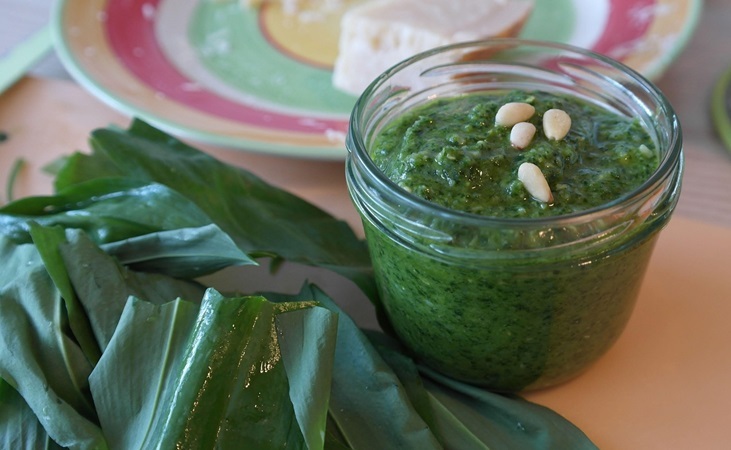
Season 3: Naomi Draper, Brenda Kearney - artists
Martina Kilian - educator
V: With the third season we were starting to have more daylight and drier days and a bit of heat. So there was a lot more outdoor activity, including more ‘celebrations’. Brenda and Naomi focused on food and invitation, and welcoming the unexpected.
L: Because the garden was starting to really grow and produce things at this point, every week the artists would arrive with some kind of food that was related to the garden. So we had wild garlic pesto bread, fennel seed biscuits, lemon cake, mint lemonade…Everything that they brought we sat around to eat, but also to discuss; discussing the fact that you could get the mint from the garden or the fennel seeds from the garden, for example.
Martina Kilian joined the group for this season, and we had a really great tour of the garden. We all had magnifying glasses that day and were going around finding things and drawing them. So to have this person who could instantly identify a random leaf and tell you all about the plant was fantastic.
V: It's amazing how we learn through osmosis a lot of the time rather than through books necessarily, so discovering things together in that kind of setting can be such a rich way of gaining knowledge.

Native Irish Grown Wildflowers - Cottage Garden
View ProductThe group also made seed bombs as a gift for the book launch. They would have talked extensively about seeds. Not just rushing into it and going ‘well any seed bomb is a seed bomb’, but talking about which ones would actually be good for the garden and good for the bees and other pollinators.
L: And one of the teenagers actually decided to make seed bombs for his mini company in transition year, so he was bringing that knowledge back to school.
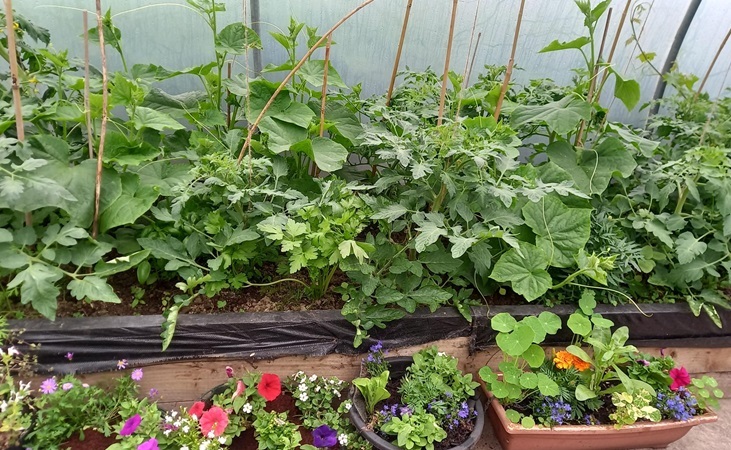
Season 4: Karen Webster - artist
Ruth Quinn - researcher, lecturer
L: This season revolved around the gifts that the garden gives us. So we had lots of conversations around what you can make or take from the garden, or give as a gift to somebody else.
V: But also what you can give back to the garden in terms of compost, or what you can provide for the non-human participants in the garden.
L: We also made paper with Karen Webster out of nettles, and then a second time with pumpkin leaves. That idea that everybody comes in, you sit down, you're settled and it's like:
‘OK, we're going to make paper today’.
‘What? We're going to make paper?!’
‘Yeah, we're going to make it out of nettles.’
‘What?’ (laughter)
V: You think about how parts of a plant can be different things at different times, including compost at the end. But in between being a plant and being compost, it can be paper. All these different states of being.
Karen also did cyanotypes (an environmentally friendly photographic printing method), which is where you place a plant or leaf on treated paper, expose it to light, and then wash the print in water to remove the solution.
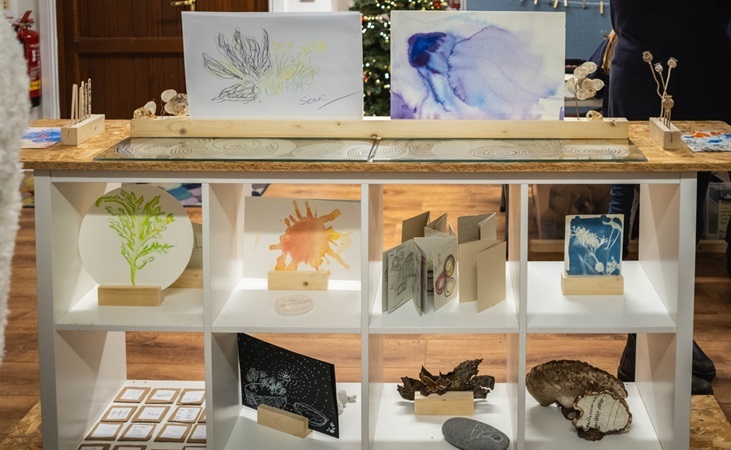
L: Ruth Quinn worked with Karen as well: her specialty is water engineering. So there was a good talk around water in urban settings. She was asking questions like ‘When it's raining heavily and you see water running along the street, where does it go?’ And explaining how urban gardens can help soak up the excess water.
She had an interesting fact I was shocked to hear at the time: it was basically how long Ireland’s water reserve lasts if it were to stop raining. I think it was only a matter of weeks. Maybe two weeks’ worth of water for the whole country if it suddenly stopped raining, something like that!
Was there any part of the project where you were surprised at just how popular it was or how engaged people were with it?
L: The worms. At certain stages in the year, we would take out the wormery and feed the worms. So you get the people who are squeamish (me) about that, and then you get the people who are straight in with the hands picking up the worms…
V: That's me! (laughter)
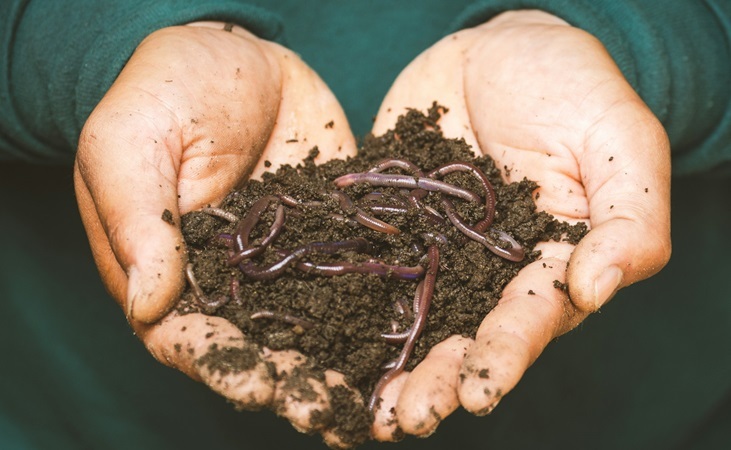
For me, when Ruth (Le Gear) was talking about water. The subject matter might have been quite abstract for a lot of people, in terms of the temperament of water or different types of crystals. But I was pleasantly surprised how open people were to those ideas. Not that I underestimated it, but it’s just nice when you see what you’d hoped for.
L: Some of the printing techniques were messy but fun. But maybe you wouldn't have got the chance to try that in another setting. The garden is such a wonderful space to be in and to make a mess. Even though obviously you have to make sure that you don't mess up the gardener's work!
From a holistic point of view as well, I think it was very beneficial for some people to be able to come every Wednesday and take part in something social.

Above image: Volunteers in the Cranmore Community Co Op garden
Do you have any future follow-ups planned?
L: This particular project came about because we had done a shorter two-week summer project with the Co Op called Green Futures, which was all about the environment. Something that we're always conscious of is the ongoing relationship Kids’ Own have with a group. That we’re not just parachuting into somewhere, doing a workshop and then you never see us again.
One of our own reflections was that it would be really nice to continue another year or maybe in a different iteration with the Cranmore Co-Op Centre. It just depends on funding and scheduling. Because you've learned so much in a year from each other, about the space and how things work - it would be really lovely to tap into that and adapt and continue.
A Year In Our Garden is available to buy from the Kids' Own website




